- Colorado HIGH SKY
- Posts
- New Years, New Sunrises
New Years, New Sunrises
A quiet morning showcases saturated colors in the HIGH SKY!
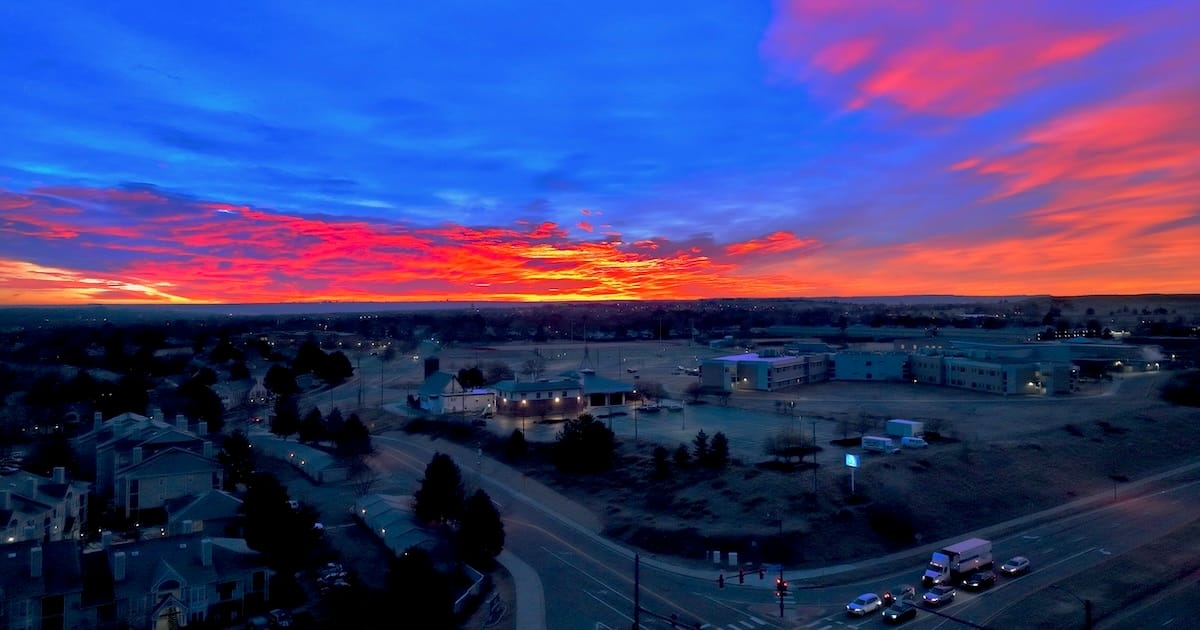
The HIGH SKY called to me with a technicolor sunrise! For years, I have collected my photographs of the fiery sunrises under the title:
As Kodachrome Above, So Monochrome Below
The difference between the skies and the ground beneath was always startling to the Director of the Media and Graphic Design department at Arapahoe Community College. While the sky itself provides the color, I have worked in post-processing to try to get as much detail from below the horizon as above.
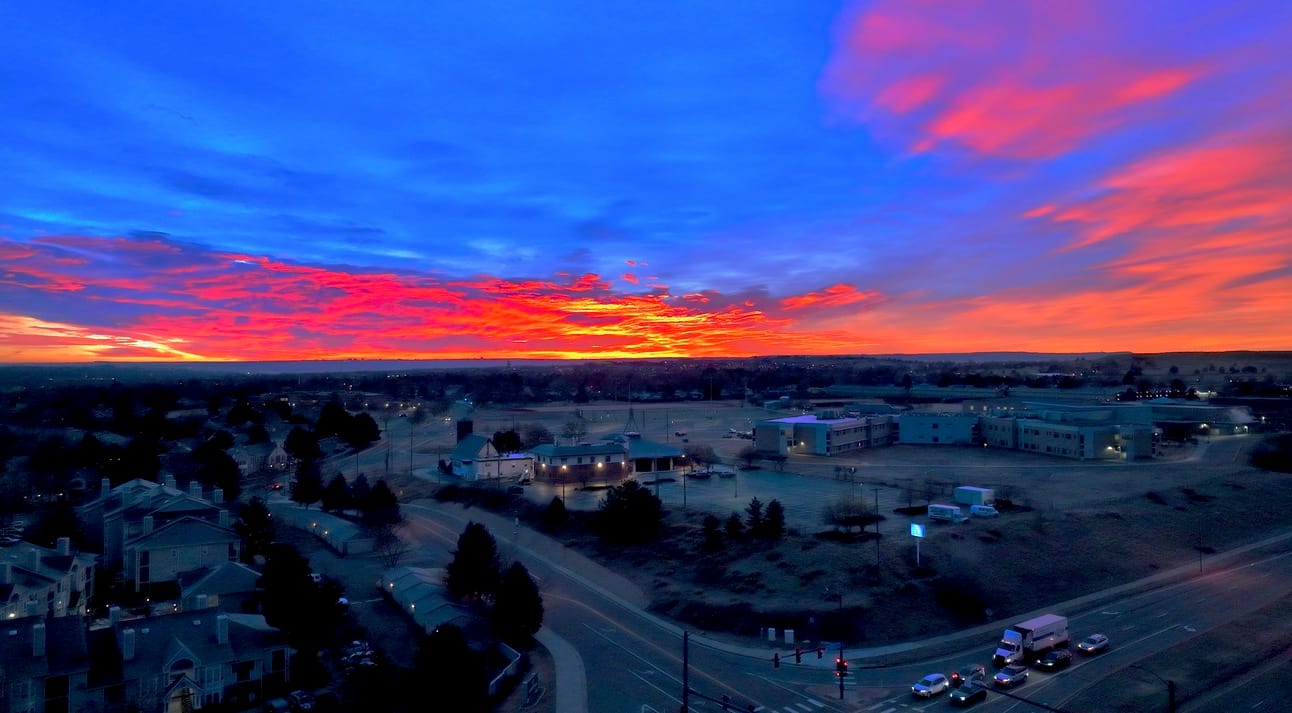
Sunrise over Bear Creek High School, taken with a DJI Mavic 3, on 3 January 2025
Without the processing, the lights of the sky overwhelm any subject matter on the ground. But now that the scenes has been show above, you may fill in some of the details in the unprocessed photo below yourself!
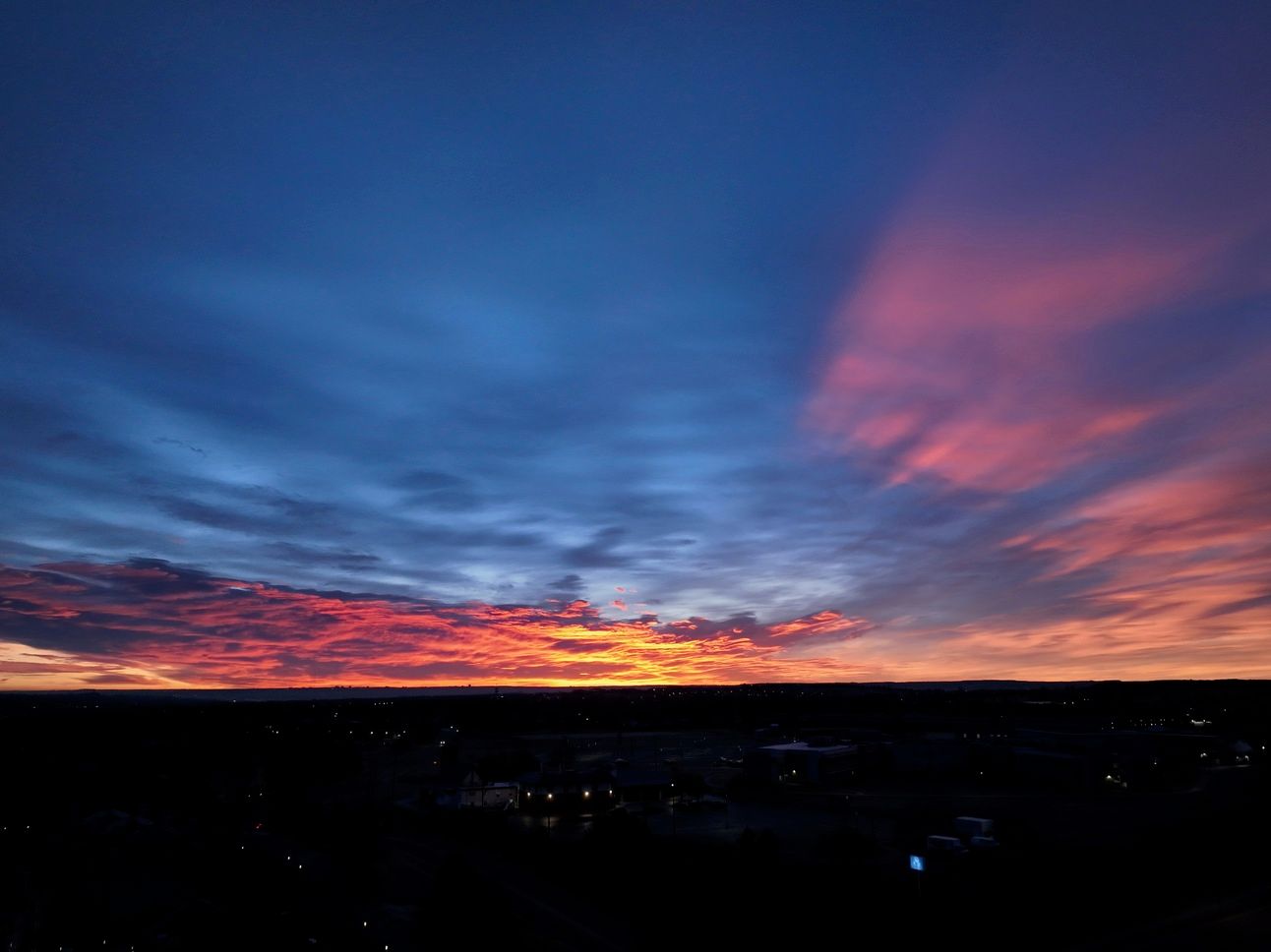
Pre-dawn above Kipling Parkway and Dartmouth Avenue, 3 January 2025
Technically, most of the “color” occurs just before dawn, with the sun still below the horizon shining upon the undersides of the clouds overhead. In the pictures above, you can see glowing clouds cast shadows upwards upon even more clouds…
That is the essence of Colorado HIGH SKY!
You may be able to see color differences between the two photos above, as the processing I performed was intended to target a color space suitable to displays (like the one you’re looking at right now), while the original color space targets the colors typically produced by home printers. The differences between the “gamuts” or overall contents of the color spaces can really be seen in the blue colors. Both photos use the Red-Green-Blue, or RGB gamut that adds or combines primary colors. However, the color profile used by default on my camera drone converts blue colors to a hue that is within the Cyan-Magenta-Yellow-BlacK, or CMYK gamut that subtracts or absorbs primary colors. The RGB color space was invented for screens using additive color theory defined in practice as shining light through colored pixels, as opposed to the use of CMYK, or subtractive color theory, that is used for printing where layers of ink absorb frequencies of light. The idea likely being that the camera can shoot photos ready for print or display by targeting the more restrictive color space for problematic combinations without the need for additional processing.
Well, that was a whole lesson in color. Wasn’t it? Of course, it’s best some times just to let nature speak for itself!
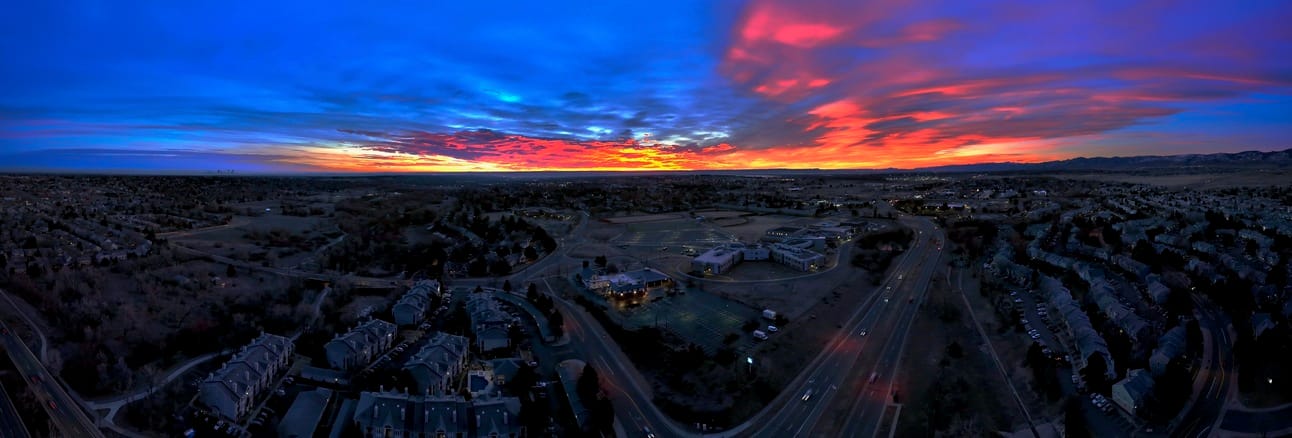
Pre-dawn panorama over Bear Creek High School from 3 January 2025
While a panorama can capture the entirety of the color spilling upwards from the horizon, only a narrow field of focus and zooming in on the subject can show the many textures and details, like in the photo below. Note that the photo below has not been processed.
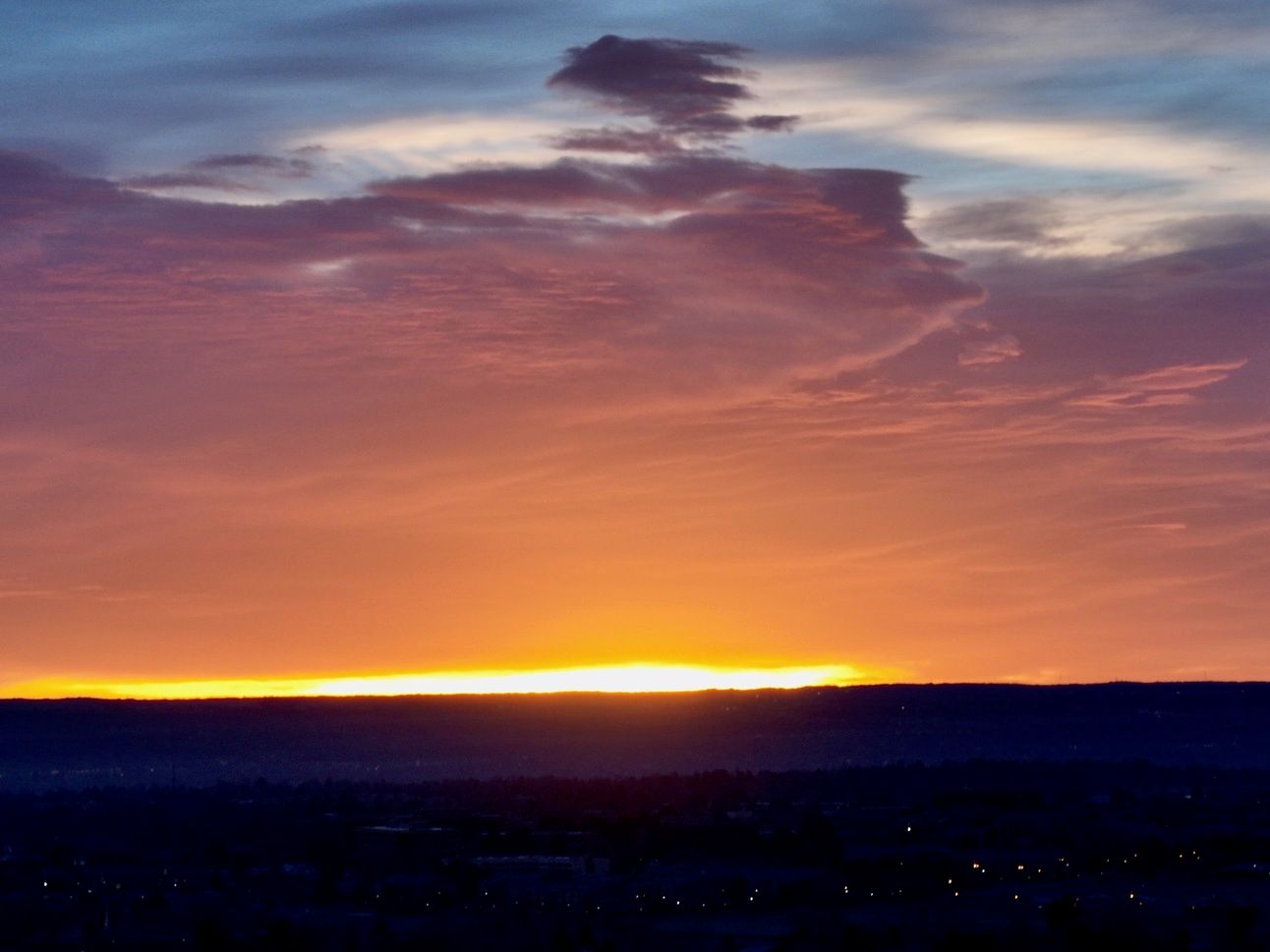
Sunrise over Lakewood (not that you could tell the location), 3 January 2025
However, for this final comparison, I have also processed the above image so that the details on the ground can be faintly discerned, while shifting the color space away from the cold white seen in the high clouds above the sunrise, towards a much warmer hue.
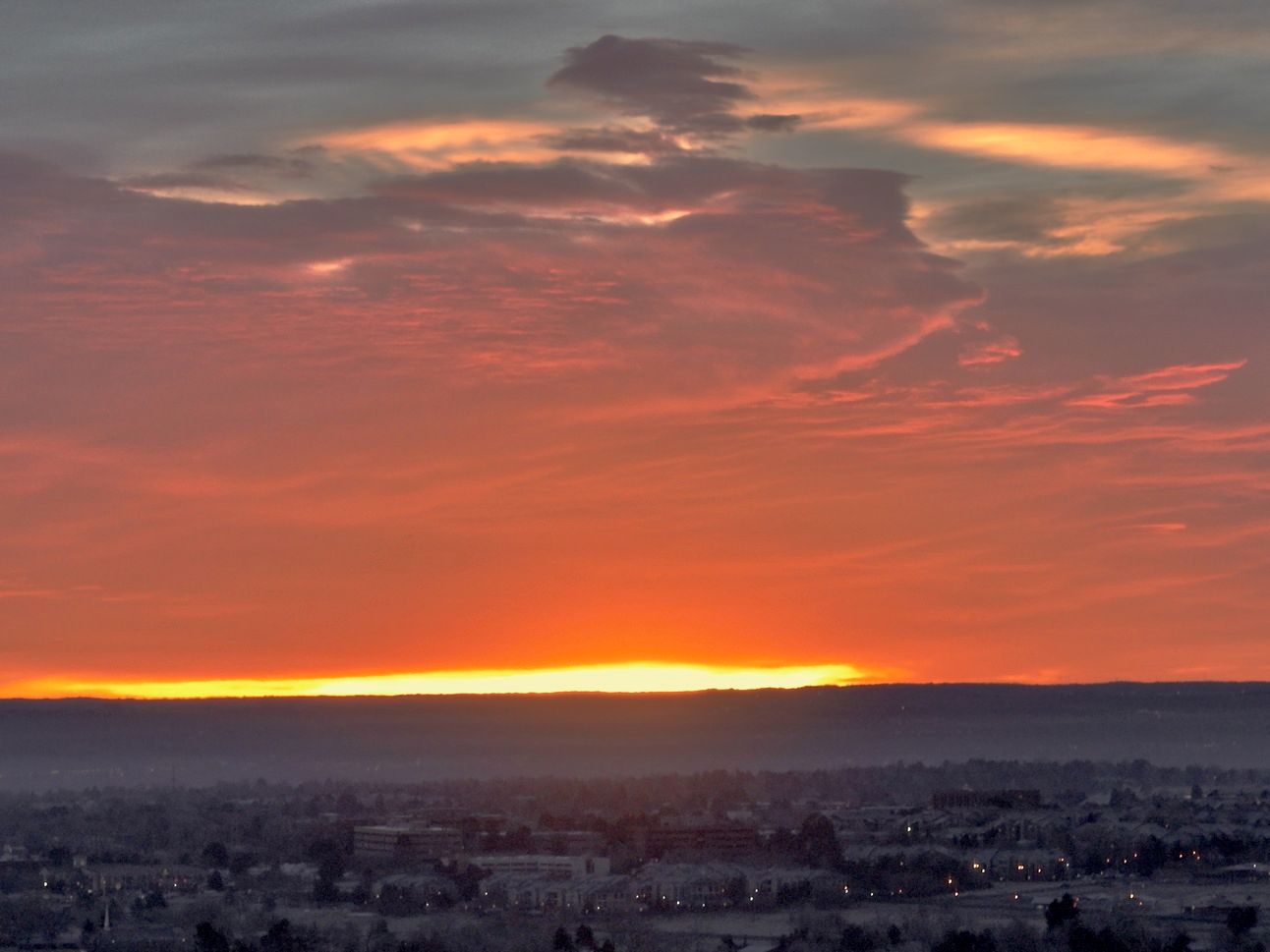
Same photo as above, after processing
For this particular process, I actually desaturated the warmer color space in order to avoid having too much red. What do you think? I’m still partial to the idea of “As Kodachrome above, so monochrome below!”
Thanks for joining me in this “little world” of aerial photography.
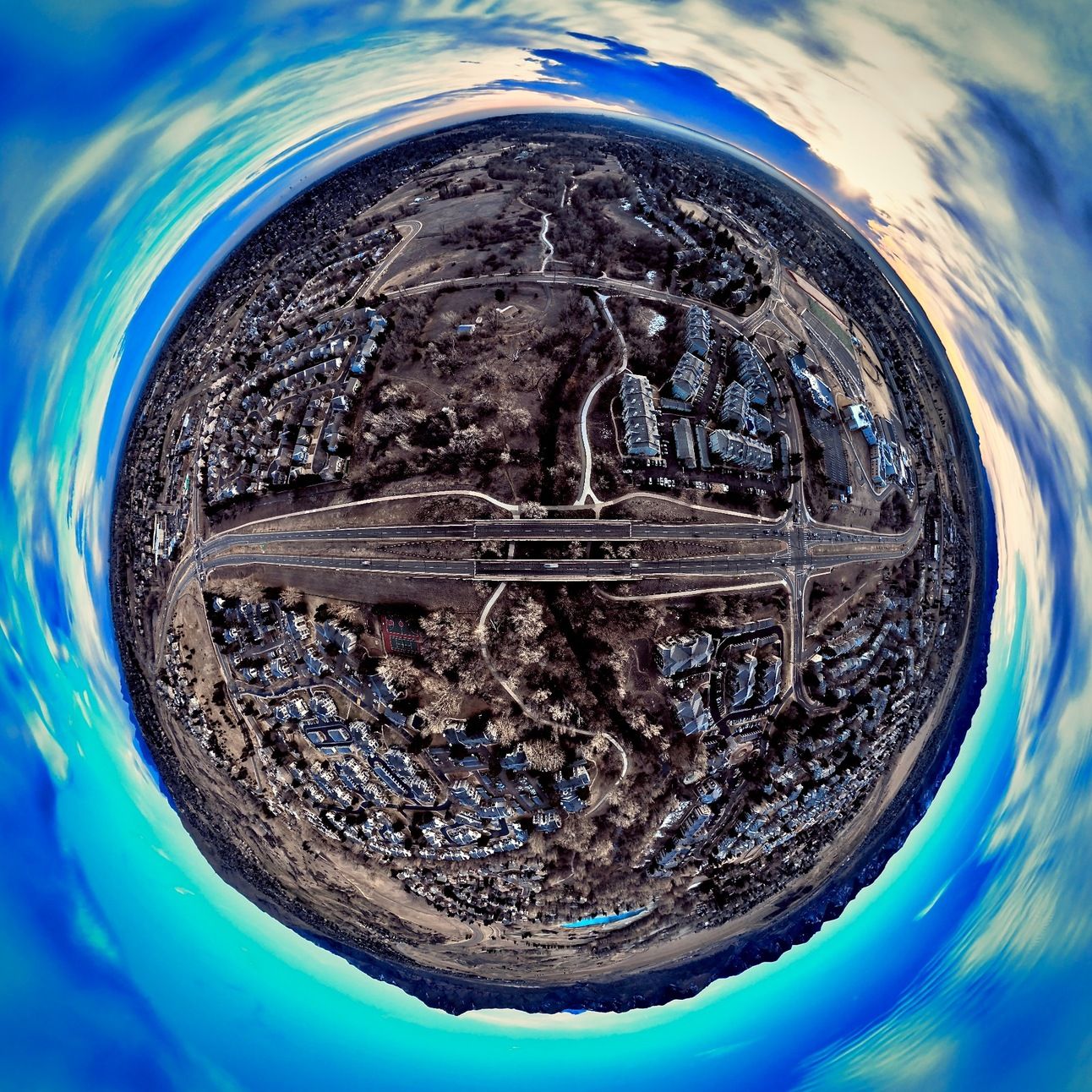
Sunrise over Bear Creek, Lakewood, Colorado, using a DJI Mini 3 Pro
And another thanks, this time for reading all the way to the end. Please let me know what you think!